#tremellaceae
Explore tagged Tumblr posts
Text
FOTD #052 : witches' butter! (tremella mesenterica)
witches' butter (AKA yellow brain, golden jelly fungus, or yellow trembler) is a jelly fungus in the family tremellaceae. it has been recorded on every continent - except antarctica. it grows in mesic to wet habitats on tree branches !!
the big question : can i bite it?? some sources say it is edible, but flavourless. :-)
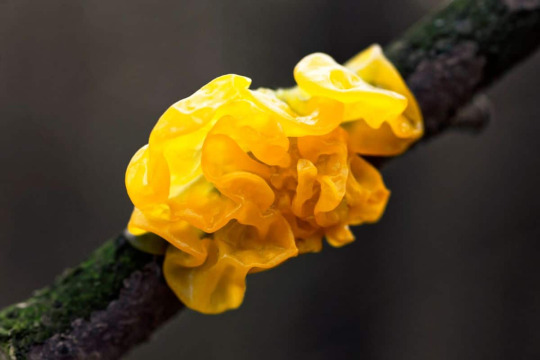

t. mesenterica description :
"the fruit body has an irregular shape, & usually breaks through the bark of dead branches. it is up to 7.5 cm (3.0 in) broad & 2.5 to 5.0 cm (1.0 to 2.0 in) high, rounded to variously lobed or brain-like in appearance. the fruit body is gelatin-like but tough when wet, & hard when dry. the surface is usually smooth, the lobes translucent, deep yellow or bright yellow-orange, fading to pale yellow, rarely unpigmented & white or colorless. the fruit bodies dry to a dark reddish or orange. the spores, viewed in mass, are whitish or pale yellow."
[images : source & source] [fungus description : source]
#• fungus of the day !! •#[tremella mesenterica]#: yellow brain :#: yellow trembler :#: golden jelly fungus :#: witches' butter :#052#||#fungi#fungus#mushroom#mycology#mushrooms#earth#forestcore#foraging#nature#cottagecore#yellow#witches' butter#yellow brain#golden jelly fungus#yellow trembler#fotd#fungus of the day
149 notes
·
View notes
Photo

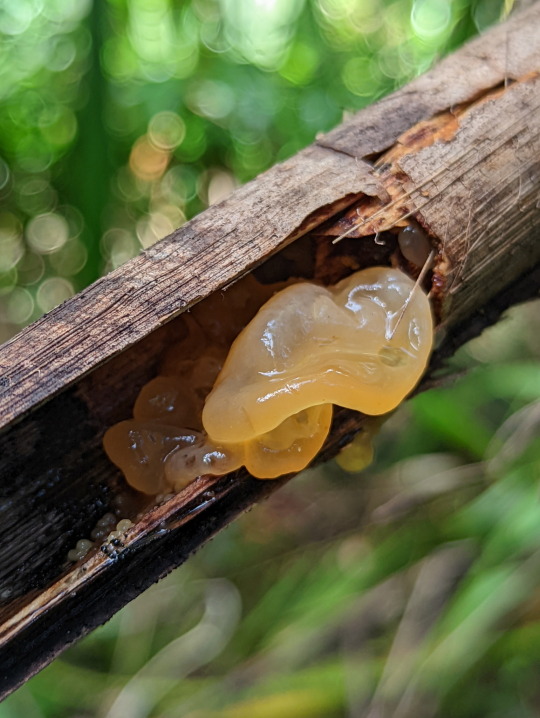
Some more Witch’s Butter, Tremella mesenterica.
04/05/22
#Witch’s Butter#Tremella mesenterica#fungi#jelly fungi#fungus#Tremella#Tremellaceae#Tremellales#Tremellomycetes#Agaricomycotina#Basidiomycota#mycology#nature#natural#naturalist#nature photography
339 notes
·
View notes
Text

Today I found a Snow Fungus (Tremella fuciformis)
#I love mushrooms!!!#Fungus#My photo#Tree trunk#Fungi#Nature#Dirtcore#Hongos#Naturaleza#Snow Fungus#Tremella fuciformis#Tremellaceae#Sienet#Luonto
106 notes
·
View notes
Photo

Most likely Witch’s Butter (Tremella mesenterica) or a related Jelly Fungus in the Tremellaceae family
#mushroom#mushrooms#jelly fungi#jelly fungus#witches butter#tremellaceae#tremella mesenterica#witch's butter#mycology#fungus#fungi
102 notes
·
View notes
Text


8/19/21
Possibly Tremella pululahuana
5 notes
·
View notes
Photo

If you’re located in Dunfermline and you’re a noob forager like me, here’s another of the places I like to wander in the hope of recognising and finding edible things to eat. 02 | Broomhall Estate This is a great place to stroll and explore. At its peak you can overlook the Forth and the village of Pattiesmuir. It’s surrounded by three modest woodlands and while it does provide a walkway between Limekilns and Dunfermline, it’s not too busy. It has a good share of hedgerows where there feels like an inexhaustible supply of rosehips. On the fringes of the woodlands there is plenty of elder, sorrel and gorse. I have no idea what edible fungi the estate has to offer, but I have observed many weird and fascinating inedible species. #broomhallestate #pattiesmuir #dunfermline #fife #fifescotland #fifefood #foodfromfife #chickweed #stitchwort #winterpurslane #minerslettuce #purslane #bramble #blackberry #woodear #jellyear #velvetshank #flammulinavelutipes #hypoxylaceae #tremellaceae #foraging #forage #wildfood #forager #wildedibles #foragingdunfermline #foragingfife #foragingscotland #foraginguk #uxforager (at Pattiesmuir) https://www.instagram.com/p/CKMk1xyM7N3/?igshid=s3solip88kcn
#broomhallestate#pattiesmuir#dunfermline#fife#fifescotland#fifefood#foodfromfife#chickweed#stitchwort#winterpurslane#minerslettuce#purslane#bramble#blackberry#woodear#jellyear#velvetshank#flammulinavelutipes#hypoxylaceae#tremellaceae#foraging#forage#wildfood#forager#wildedibles#foragingdunfermline#foragingfife#foragingscotland#foraginguk#uxforager
0 notes
Link
Tremella fuciformis a.k.a Kulat Lidah Katak. Photo by USM. #Tremellaceae
0 notes
Photo

Leafy Brain Fungus . #leafybrainfungus #leafybrain #jellyfungus #brainjelly #fungus #mycology #mushrooms #spore #shroomsong #tremellaceae (at Novato, California) https://www.instagram.com/p/B58nzMvJzXq/?igshid=czbr04s13rf4
#leafybrainfungus#leafybrain#jellyfungus#brainjelly#fungus#mycology#mushrooms#spore#shroomsong#tremellaceae
0 notes
Text
Leafy Brain Fungus
8 Sept 2022
Everyone has a favorite mushroom (Maybe)
This one is mine, its quite the funky guy: Tremellaceae, the Leafy Brain Fungus. It's more formally known as fruitbody.
It is very easy to identify as it basically looks like a brain. The true members in this family of fungi are all parasitic on other fungi, which basically means that is attaches to other fungi and grows. It mostly grows in north temperate zones.

Very ugly looking. I clearly did not choose this mushroom based on looks, I kind of think its just funny looking.
There are other kinds of mushroom like the fruitbody. There is the yellow brain fungus, which is a transparent yellow fungus similar to one above. Unlike the fruitbody, the Yellow Boy grows in warm, wet weather. Quite opposite to each other!
Do you have a favorite mushroom or ugly plant?
2 notes
·
View notes
Photo

Clinical Efficacy of Snow Fungus for Improving Cognitive Function Snow fungus (TF; Tremella fuciformis, Tremellaceae) is a mushroom with a long history of use in traditional Chinese medicine.
#Cognitive Impairment#Herbs#Medicinal Herbs#Snow Fungus (Tremella fuciformis#Traditional Chinese Medicine#Tremellaceae)
1 note
·
View note
Text
FOTD #060 : white cloud ears! (tremella fuciformis)
the white cloud ears fungus (also called snow fungus, snow ear, silver ear fungus & white jelly mushroom) is a parasitic fungus in the family tremellaceae. it is widespread, especially in the tropics, & grows on the dead branches of broadleaf trees !!
the big question : can i bite it?? yes :-) this fungus is edible (traditionally used in sweet dishes), has medicinal uses, & has history in asian beauty products.


t. fuciformis description :
"fruit bodies are gelatinous, watery white, up to 7.5 centimetres (3 inches) across (larger in cultivated specimens), & composed of thin but erect, seaweed-like, branching fronds, often crisped at the edges."
[images : source & source] [fungus description : source]
#• fungus of the day !! •#[tremella fuciformis]#: snow fungus :#: snow ear :#: silver ear fungus :#: white jelly mushroom :#: white cloud ears :#060#||#fungi#fungus#mycology#cottagecore#mushrooms#earth#mushroom#forestcore#nature#foraging#white jelly mushroom#snow fungus#snow ear#silver ear fungus#white cloud ears#tremella fuciformis#fotd#fungus of the day
87 notes
·
View notes
Photo
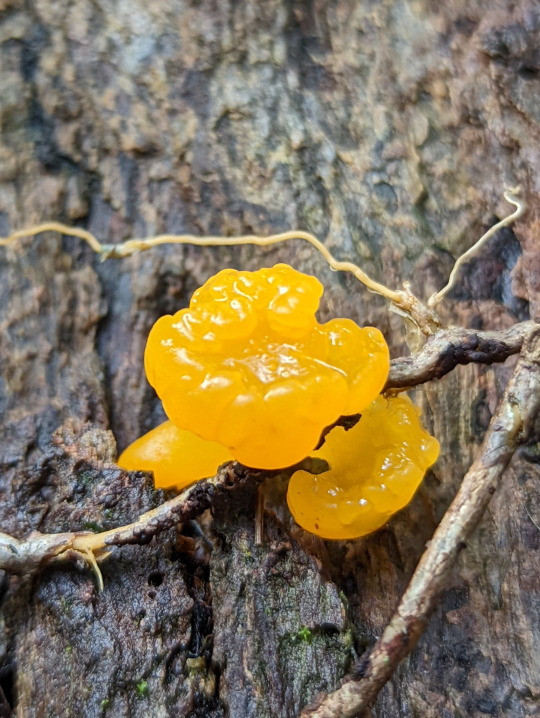
Tremella mesenterica, or Witch’s Butter!
A very peculiar jelly-like fungus.
04/05/22
#Tremella mesenterica#witch's butter#Tremella#Tremellaceae#Tremellales#Tremellomycetes#jelly fungi#Agaricomycotina#fungi#fungus#Basidiomycota#nature#natural#naturalist#nature photography
133 notes
·
View notes
Text




Hell yeah Tremellacea
3 notes
·
View notes
Photo
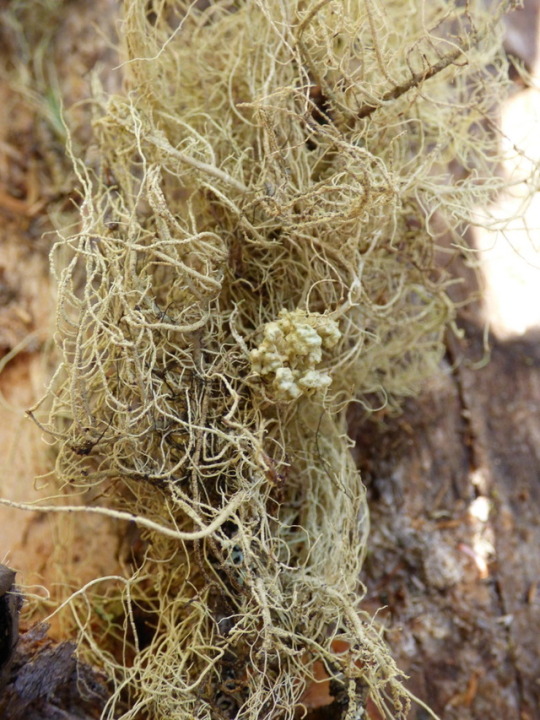
Preface
Yes, this post is long enough to require a preface.
As promised, this is the extent of the world’s knowledge on Tremella everniae, gathered from the literature and an interview with Veera Tuovinen, a grad student who does research on this species. This was originally written as an assignment for my Fungi course where I had to make a wikipedia-style page about a species, and now I’m sharing it with y’all to celebrate getting an A+ in the course AND a job working with my prof this summer!
Tremella everniae
Binomial name: Tremella everniae Deiderich English name: none
Classification
Phylum: Basidiomycota Class: Tremellomycetes Order: Tremellales Family: Tremellaceae Genus: Tremella Species: Tremella everniae
Description
Tremella everniae is a lichenicolous Basidiomycete fungus thought to be parasitic on the Ascomycete lichens Evernia mesomorpha, Evernia prunastri, and Evernia esorediosa. The only structure currently described is its fruiting body or basidioma, which is a popcorn-like gall formed on the host. The basidioma is 3-15mm in diameter and is initially the same grey-green colour as the host, then develops a brownish hymenium at maturity. The interior of the basidioma appears white and fluffy, and contains hyphae of both T. everniae and the host fungus, algal cells, and basidia and basidiospores of T. everniae.
Tremella everniae is a heterobasidiomycete. Heterobasidiomycetes are a polyphyletic group characterized by basidiospores which can germinate by means of secondary spores, basidia that are are often septate, and being saprophytes or parasites on other fungi or on plants. The genus Tremella is not a monophyletic group, so T. everniae has little in common with jelly fungi also included in this genus.
Life Cycle
Tremella species are generally all dimorphic, having a hyphal teleomorph and a yeast anamorph. Although only the fruiting body of the hyphal phase has been described in T. everniae, it is assumed that this species is dimorphic and has a yeast phase as well. It is hypothesized that the yeast phase may be found in the cortex of the host lichen.
There are two phases of the dimorphic life cycle, haploid yeast and dikaryotic mycelium. The yeast cells conjugate to form the mycelium, which then forms the fruiting body, which produces basidiospores that give rise to more yeast cells. The mycelium may also produce conidia which give rise to yeast cells.
Ecology and Distribution
Tremella everniae can be found on the lichen Evernia mesomorpha. It has also been found on the lichens Evernia prunastri in Europe and Evernia esorediosa in northern Asia.
The exact distribution of T. everniae is unknown but assumed to be the same as that of its host lichens. E. mesomorpha is found over conifers in open boreal forests at lower elevations. E. prunastri is found over coniferous and deciduous trees and shrubs in sheltered, humid forests at lower elevations. Both host lichens are incompletely circumpolar.
In Alberta, T. everniae can be found in the boreal forest.
Parasitism
Tremella everniae is thought to be mycoparasitic on the fungus in its host lichens. Almost all Tremella species are mycoparasites, and so it is assumed that the same is true of T. everniae. However, because the genus Tremella is polyphyletic, its species may bear little resemblance to each other. T. everniae has lots of haustoria, the structures known to be used by parasitic fungi to extract resources from their hosts, however the presence of haustoria is not necessarily evidence of mycoparasitism. It is unknown whether the haustoria of T. everniae actually penetrate the host cells. Additionally, some assume that the presence of galls is automatically an indication of disease, however this has not been proven.
Future Research
Very little is known about Tremella everniae! Future research could focus on locating the yeast phase, and determining the exact nature of the relationship between T. everniae and its host lichen. It would also be valuable to determine the phylogenetic relationships within the polyphyletic genus Tremella in order to make valid comparisons between species.
Gallery

Left: Cross section of Tremella everniae fruiting body stained with phloxine and viewed at 40x magnification. Note the algal cells (large red circles) and fungal hyphae (squiggly lines). Right: Cross section of Tremella everniae fruiting body stained with phloxine and viewed at 100x magnification.
References
von Brackel, W. and D. Puntillo. 2016. New records of lichenicolous fungi from Calabria (southern Italy), including a first checklist. Herzogia 29(2):277-306.
Diederich, P. The Lichenicolous Heterobasidiomycetes. Bibliotheca Lichenologica 61.
Goward, T. 1999. The Lichens of British Columbia: Illustrated Keys, Part 2 - Fruticose Species. Crown Publications, Victoria, British Columbia, Canada.
Liu, X.-Z., Q.-M. Wang, M. Göker, M. Groenewald, A. V. Kachalkin, H. T. Lumbsch, A. M. Millanes, M. Wedin, A. M. Yurkov, T. Boekhout, and F.-Y. Bai. 2016. Towards an integrated phylogenetic classification of the Tremellomycetes. Studies in Mycology 81:85-147.
Millanes, A. M., P. Diederich, S. Ekman, and M. Wedin. 2011. Phylogeny and character evolution in the jelly fungi (Tremellomycetes, Basidiomycota, Fungi). Molecular Phylogenetics and Evolution 61:12-28.
Zhurbenko, M. P. and S. E. Vershinina. 2014. Opegrapha bryoriae sp. nov. and other lichenicolous fungi from Asian Russia. Herzogia 27(1):93-109.
Zugmaier, W., R. Bauer, and F. Oberwinkler. 1994. Mycoparasitism of some Tremella species. Mycologia 86(1):49-56.
#fungi#fungus#lichen#lichens#mycology#science#tremella#tremella everniae#evernia#evernia mesomorpha#evernia prunastri#evernia esorediosa#lichenicolous fungus#mycoparasitism#lichenology#not plants
29 notes
·
View notes
Text
The Future According to Mota Edibles Experts
The life cycle of the upper fungus (macrofungi)
The life cycle of basidiomycetes includes specific stages such as genetic mutation [3]. Spores from basidium are usually produced for sexual reproduction, rather than for asexual reproduction [20]. The club-shaped basidium carries a substance called basidiospores.
In the basidium, the nuclei of two different types of mating (- and +) and fuse (karyogamy), which causes the diploid zygote and then meiosis as shown in Figure 1. The haploid nuclei migrate to the basidiospores, bursting and produce monokaryotic hyphae. The extracellular mycelium is called the primary mycelium. Mycelia of different mating species can combine and produce a second mycelium containing haploid nuclei of two different mating species.
This is the decayotic phase of the basidiomycetes lifecycle, also called the dominant phase. Finally, the second mycelium produces basidiocarp, a fruit-bearing organ that extends beyond the soil (epigeous macrofungi) as the basidiocarp carries a growing bactericidal bone under its cap at a depth of 10-20 cm or below the ground as hypogeous macrofungi. or truffles. In the phylum mota edibles, sexual reproduction is usually directed by two sets of independent mating genes, which control the stages of the sexual cycle.
Genetics include pre-lipopeptide pheromones and their cognate receptors that mediate mating partner recognition, cell synthesis, and homeodomain transcription factors, forming heterodimers to regulate mating behavior. Sexual reproduction in a wide variety of fungi plays an important role in pathogenic development, promoting genetic diversity, adaptability, and longevity [21].
Examples of other wild and medicinal mushrooms
Types of Ganoderma
Polypore mushroom, which grows on wood. Ganoderma can be separated from other polypores because it has a double-walled basidiospore. The name Ganoderma is derived from the Greek ganos "brightness-sheen" or "shining" and the derma "skin" [22]. Ganoderma is characterized by large, endless, and woody basidiocarps, also called "cones." They are lignicolous, with or without skin. Fruit bodies usually grow in the form of a fan or hoof on the trunks of living or dead trees. It has double walls, abbreviated characters with decorated yellow to brown interior layers. This type was invented by Karsten in 1881. Members of the Ganodermataceae family were traditionally considered to be difficult to distinguish due to a lack of reliable morphological features, the species being divided into two groups: Ganoderma with a shiny cap surface like G. lucidum and Elfvingia with a mota edibles cap like G. aapplanatum [23]. Phylogenetic analysis using DNA sequencing information obtained from mitochondrial Small Subunit (SSU) rDNA has helped clarify our understanding of the relationships between Ganoderma species. The genus can now be divided into a specific monophyletic group, G. colossus, G. applanatum, G. tsugae, Asian group G. lucidum, G. meredithiae, and G. resinaceum [24].
Types of Rigidoporus
The mold forms a mass of white mycelia, which is said to be a thin strip of 1-2 mm thick that grows and attaches firmly to the surface of the root bark. Rigidoporus microporus is a broad fruit body (20 cm wide), leathery, slightly velvety, shelf attached to a wide, and usually imbricate and substrate. Their color ranged from orange to red or brown and later faded [25]. These rhizomorphs grow rapidly and can extend several meters into the soil when there is no woody substrate. Therefore, healthy rubber trees can be infested with free rhizomorphs growing on stems or infected debris buried in the ground and roots that affect those of a neighboring sick tree [26].
Types of Tremella
Tremella spp. belongs to the family Tremellaceae. Tremella spp. parasites of other fungi and most produce anamorphic yeast states where Basidiocarps (fruit bodies) are produced; they are gelatinous and are grouped separately between “jelly fungi.” More than 100 types of Tremella are known worldwide at present. There are two types namely: T. fuciformis and T. aurantialba are grown for food for consumption [27]. The word comes from the Latin tremere meaning "trembling." Linnaeus placed Tremella on a mixture that included seaweed, cyanobacteria, and myxomycetes as well as fungi, but Persoon reviewed Tremella in 1794 and 1801. He re-created and regarded Tremella as a genus (Tremella Pers.) From the beginning created by Linnaeus (Tremella L.).
Tremella Pers. is now preserved under the International Code for Plant Nomenclature and Tremella mesenterica as a plant species [28]. Tremella varieties produce hyphae that are usually (but not always) bound and have haustorial cells, which enter the host hyphae. Basids are “tremelloid,” ranging from globose to ellipsoid in direct or diagonal separation. Conidiophores are usually present and resemble yeast cells [28]. Tremella mesenterica occurs mainly in broad, mixed leaf forests. It is widely distributed in tropical and subtropical regions, including Africa, Asia, Australia, Europe, and North and South America. Although considered mota edibles and tasteless, the fungus is edible. Tremella mesenterica produces bioactive compounds that attract research interest due to their diverse biological functions [29].
Types of Agaricus
It is an important species of mushroom that contains both edible and toxic species with over 300 members worldwide. The genus includes the common mushroom (button) (Agaricus bisporus) and wild mushroom (Agaricus campestris). Agaricus members are characterized by a fleshy cap (pileus) that emerges from the lower abscesses producing nudity [30]. Agaricus members also have a stem (stipe), which lifts the mass over the substrate and partially veins and protects the growing bones a.
0 notes
Photo
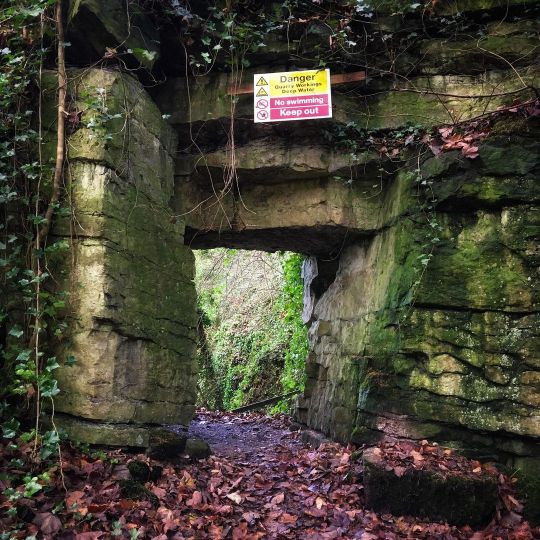
It’s been ages since I’ve been able to get out and suck up some fresh air on the hunt for interesting plants and fungi. It was such a beautiful day, great light, pleasant scenery and a landscape full of colour. I found some of the weirdest, ickiest, squishy and oozing fungi that I’ve seen so far... and who knew that Elf Caps look so rude in their early stages 🤭 (pic 3). I found all these interesting fungi in woods surrounding an old disused quarry in Charlestown. I had this location pinned on my ‘map of places to forage’ for a while but always overlooked it. I’m really glad I gave it a shot today and if you’re in the area it’s worth a visit, even if only for a walk. I don’t know how busy it is normally, but I had the whole place to myself today... #lichenized #peltigeraceae #meruliaceae #helotiaceae #heterobasidiomycete #elfcups #sarcoscypha #tremellaceae #funghi #fungi #forage #foraging #foragedfood #foraged #fifeforager #uxforager (at Charlestown, Fife) https://www.instagram.com/p/CIBv96xMS0-/?igshid=r9rveaqutn0c
#lichenized#peltigeraceae#meruliaceae#helotiaceae#heterobasidiomycete#elfcups#sarcoscypha#tremellaceae#funghi#fungi#forage#foraging#foragedfood#foraged#fifeforager#uxforager
0 notes